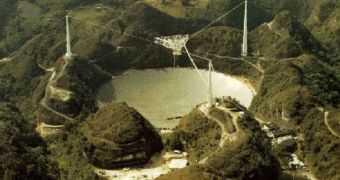Soon, the first set of “ears” for the Atacama Large Millimeter Array (ALMA) telescope, which is currently under construction in Chile, will be shipped out from England. The UK is in charge of delivering the first receivers for the international project, which will create a telescope that totals the observation power of more than 66 antennas, all roughly 12 meter-wide. When it's complete, ALMA will be the largest radio telescope in the world, and will be able to see behind the dust clouds that currently obstruct Hubble's field of view.
“Observing sub-millimeter waves allows you to see parts of the universe that are obscured by dust. The Hubble telescope obviously has an impressive resolution, but it can't see the sub-millimeter radiation from behind these dust clouds,” Receiver Project Technical Manager Mark Harman, who is currently working at the Rutherford Appleton Laboratory (RAL) in Oxfordshire, where the devices are constructed, explains.
One of the main tasks that the new observatory will have is to observe the radiation coming from behind dust “curtains” that obstruct the view of all other Earth- or orbit-based telescopes at this point. Hopefully, this will provide astronomers with new information on how galaxies and stars came to be, and what their natural evolution is. Just recently, astrophysicists have learned that all they believe about a star's life cycle might actually not be that accurate, as evidenced by a relatively young star, which has unexpectedly exploded into a supernova.
The first, three-quarter-tonne receiver is scheduled to reach the Alma site on Saturday, and everyone involved with the work is very excited about this historic date. The devices will act as huge “eardrums,” concentrating the faint radio echoes of forming galaxies and exploding stars into an accessible and clear image of what happened immediately after the Big Bang.
“This is a major step forward for the Alma project. It's a collaboration between three continents from more than 10 sites, and this is the first one from Europe that will go into a full production run. This is really exciting for us,” ALMA receivers European contingent Project Manager Gie Han Tan shares. In addition to simply having 66 antennas, ALMA will also use a technique called interferometry, in order to get its pictures.
Basically, all the “units” of the system will behave in such a way that researchers will feel they are working with a telescope whose antenna is as large as the longest distance between two of the smaller units. In other words, if two antennas are placed 1 mile apart, then the “virtual telescope” will have a lens one-mile wide. This approach allows for more detailed observations, which will be further boosted by cooling the units to minus 269 degrees Celsius (minus 452 degrees Fahrenheit).

 14 DAY TRIAL //
14 DAY TRIAL //